The following safety tips are offered by the engineering department of Bil-Jax, Inc. as guidelines in avoiding job-site situations that could prove dangerous to scaffold workmen.
Check Safety Codes:
OSHA, state and local safety codes should be consulted; and approval obtained from Building Safety and Industrial Commission on scaffold tips.
Inspect and Check:
Take no chances. Inspect the scaffold set up after erection and daily while in use. Don’t remove or allow removal of, any parts without the OK from the proper authorities. When wire rope is used, inspect it on each job.
Begin With Good Footing: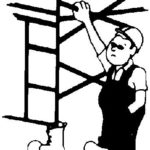
Use base plates, sills or footers (or combination) on solid ground; make sure scaffold is leveled or plumbed.
Reject Damaged Parts:
Bent or otherwise damaged end frames or braces should not be used. Put them aside for replacement. For repair, call Bil-Jax, Inc.
Don’t Short-Change Bracing:
Use bracing at all points provided; add extra braces if needed to insure stability.
Tie Scaffold To the Building: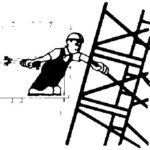
Scaffolding should be tied to the structure using heavy wire or tie-in devices. The first vertical tie should be at the maximum height of 4 times the narrowest base dimension. Additional ties are not to exceed 26 feet vertically. Maximum horizontal distance between ties is not to exceed 30 feet.
Don’t Overload Scaffolding: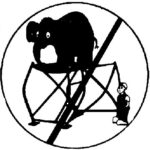
Follow the safe load capacities as given by the scaffold manufacturer. There’s a limit even to what steel can support. A 4-to-1 safety factor must be figured on scaffolding.
Use Metal Catwalks, Platforms;
Where available. If wood plank is used, it must be scaffold grade or better. Inspect thoroughly before every job to make sure it is free from breaks, knots, cracks or warpage. Decking should be full width.
Don’t Ride Moving Scaffold;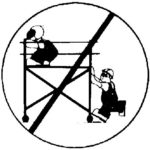
and remember scaffold units are limited in height to 4* times their narrowest base dimension (unless base is widened by outriggers, or more end frames; or tied into building.) Always keep casters locked. (except to re-spot)
Don’t Climb Braces: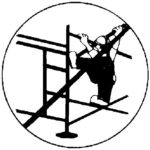
Use the steps provided on most steel scaffolds to climb up to or down from work levels. Use scaffold climbing ladders where required.
Use Double Guard Rails;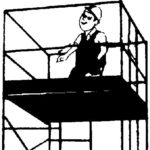
Use Double Guard Rails and Toeboards on exposed sides at platform heights of 6 feet or more.
Protect Working Levels:
Use overhead canopies to protect workers on lower work levels when work is being done overhead. Rope off unsafe areas underneath scaffold or provide wire mesh around work area.
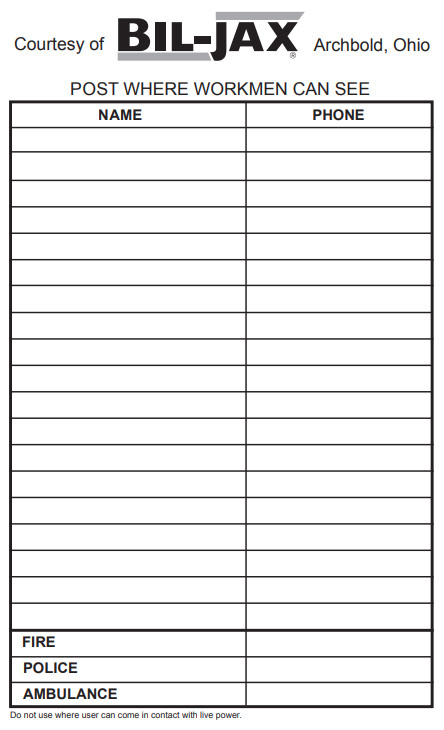
SCAFFOLDING SAFETY GUIDELINES
as Recommended by SCAFFOLDING, SHORING & FORMING INSTITE
It shall be the responsibility of all employers and employees to read and comply with the following common sense guidelines which are designed to promote safety in the erecting and dismantling of scaffolds. These guidelines do not purport to be all-inclusive nor to supplant or replace other additional safety and precautionary measures to cover usual or unusual conditions. Local, State or Federal statute or regulations shall supersede these guidelines if there is a conflict and it is the responsibility of each employee to comply.
GENERAL GUIDELINES
I. POST THESE SCAFFOLDING SAFETY GUIDELINES in a conspicuous place and be sure that all persons who erect, dismantle or use scaffolding are aware of them.
II. FOLLOW ALL STATE, LOCAL AND FEDERAL CODES, ORDINANCES AND REGULATIONS pertaining to scaffolding because they may be more restrictive. For example, height or width requirements may vary.
III. SURVEY THE JOB SITE—A survey shall be made of the job site for hazards, such as untampered earth fills, ditches, debris, high tension wires, unguarded openings, and other hazardous conditions created by other trades. These conditions shall be corrected or avoided as noted in the following sections.
IV. INSPECT ALL EQUIPMENT BEFORE USING—Never use any equipment that is damaged or defective in any way.
V. KEEP ALL EQUIPMENT IN GOOD REPAIR—Avoid using corroded equipment—the strength of corroded equipment is not known.
VI. INSPECT ERECTED SCAFFOLDS DAILY—or at the beginning of every shift to be sure that they are maintained in safe condition.
VII. NEVER USE EQUIPMENT FOR PURPOSES OR IN WAYS FOR WHICH IT WAS NOT INTENDED.
VIII. REPORT ANY UNSAFE CONDITION. NEVER TAKE CHANCES—Do not work on scaffolds if your physical condition is such that you feel dizzy or unsteady in any way.
IX. WORKING UNDER THE INFLUENCE OF ALCOHOL OR ILLEGAL DRUGS IS STRICTLY PROHIBITED.
X. CONSULT YOUR SCAFFOLDING SUPPLIER—NEVER TAKE CHANCES—Consult manuals and instructions provided by the supplier; scaffolding is his business.
GUIDELINES FOR ERECTION AND USE OF SCAFFOLDS
A. PROVIDE ADEQUATE SILLS for scaffold posts and use base plates.
B. USE ADJUSTING SCREWS or other approved conditions.
C. PLUMB AND LEVEL ALL SCAFFOLDS as the erection proceeds. Do not force braces to fit—level the scaffold until proper fit can be made easily.
D. BRACING. Each frame or panel shall be braced by horizontal bracing, cross bracing, diagonal bracing or any combination thereof for securing vertical members together laterally. All brace connections shall be made secure, in accordance with manufacturers’ recommendations.
E. DO NOT CLIMB CROSS BRACES. Use only an access (climbing) ladder, access steps, frame designed to be climbed or equivalent safe access to scaffold.
F. TIE RUNNING SCAFFOLD TO WALL or structure when the height exceeds* four (4) times the minimum scaffold base dimension. The first vertical and longitudinal tie shall be placed at this point. Vertical ties shall be repeated at intervals not greater than 26 feet. Longitudinal ties shall be placed at each end and at intervals not greater than 30 feet. Ties must prevent the scaffold from tipping into or away from the wall or structure.
G. WHEN SCAFFOLDS ARE TO BE PARTIALLY OR FULLY ENCLOSED, specific precautions must be taken to assure frequency and adequacy of ties attaching the scaffolding to the building due to increased load conditions resulting from effects of wind and weather. The scaffolding components to which the ties are attached must also be checked for additional loads.
H. WHEN FREE STANDING SCAFFOLD TOWERS exceed* four times their minimum base dimension vertically, they must be restrained from tipping.
I. DO NOT ERECT SCAFFOLDS NEAR ELECTRICAL POWER LINES UNLESS PROPER PRECAUTIONS ARE TAKEN. Consult the power service company for advice.
J. DO NOT USE ladders or makeshift devices on top of scaffolds to increase the height.
K. DO NOT EXCEED MANUFACTURERS’ RECOMMENDED LOAD RATING.
L. EQUIP AND MAINTAIN ALL PLATFORMS with proper guardrails, midrails, and toeboards along all open sides and ends of scaffold platforms.
M. ALL BRACKETS shall be seated correctly with side brackets parallel to the frames and end brackets at 90 degrees to the frames. Brackets shall not be bent or twisted from normal position. Brackets (except mobile brackets designed to carry materials) are to be used as work platforms only and shall not be used for storage of material or equipment. When brackets are used, the scaffold shall be tied to the structure or otherwise restrained to prevent tipping.
N. ALL SCAFFOLDING ACCESSORIES shall be used and installed in accordance with the manufacturers’ recommended procedure. Accessories shall not be altered in the field. Scaffolds, frames and their components of various manufacturers shall not be intermixed.
O. FOR PLANKING, THE FOLLOWING GUIDELINES APPLY:
1. Use only lumber that is properly inspected and graded as scaffold plank.
2. Planking shall have at least 12 inches of overlap and extend 6 inches beyond center of support, or, be cleated at both ends to prevent sliding off supports.
3. Fabricated scaffold planks and platforms, unless created or restrained by hooks, shall extend over their end supports not less than 6 inches nor more than 12 inches.
4. Secure plank to scaffold when necessary.
P. FOR ROLLING SCAFFOLDS THE FOLLOWING ADDITIONAL GUIDELINES APPLY.
1. CASTERS WITH PLAIN STEMS shall be attached to the panel or adjustment screw by pins or other suitable means.
2 .DO NOT EXTEND ADJUSTING SCREWS ON ROLLING SCAFFOLDS MORE THAN 12 INCHES.
3. WHEELS OR CASTERS shall be provided with a locking device and kept locked during erection and dismantling or any time scaffolds are not being moved.
4. SECURE OR REMOVE ALL MATERIAL AND EQUIPMENT from platform before moving scaffold.
5. USE HORIZONTAL DIAGONAL BRACING near the bottom and at 20 foot intervals measured from the rolling surface.
6. DO NOT USE brackets or other platform extensions without consideration of overturning effect.
7. THE HEIGHT OF A ROLLING SCAFFOLD excluding its uppermost guardrails, must not exceed* four times its smallest base dimension unless it is stabilized by an engineered counterweight system or some other equivalent means.
8. CLEAT OR SECURE ALL PLANKS.
9. DO NOT ATTEMPT TO MOVE A ROLLING SCAFFOLD WITHOUT SUFFICIENT HELP—watch out for holes in floor and overhead obstructions—stabilize against tipping.
10. DO NOT RIDE ROLLING SCAFFOLDS.
11. JOINTS shall be restrained from separation.
Q. FOR “PUTLOGS” AND “TRUSSES” the following additional guidelines apply.
1. DO NOT CANTILEVER OR EXTEND PUTLOGS/TRUSSES as side brackets without thorough consideration for loads to be applied.
2. PUTLOGS/TRUSSES SHOULD BE EXTENDED AT LEAST 6 inches beyond point of support.
3. PLACE RECOMMENDED BRACING BETWEEN PUTLOGS/TRUSSES when the span of putlog/truss is more than 12 feet.
R. WHEN DISMANTLING SCAFFOLDING THE FOLLOWING ADDITIONAL GUIDELINES APPLY:
1. CHECK TO SEE IF SCAFFOLDING HAS BEEN STRUCTURALLY ALTERED in any way which would make it unsafe, and if so, reconstruct where necessary before commencing with dismantling procedures.
2. VISUALLY INSPECT PLANK prior to dismantling to be sure that they are safe to work on.
3. COMPONENTS SHOULD BE LOWERED as soon as dismantled in safe manner so as to protect personnel below.
4. DO NOT ACCUMULATE EXCESS COMPONENTS OR EQUIPMENT on the level being dismantled.
5. DISMANTLED EQUIPMENT should be stockpiled in an orderly manner.
S. FOLLOW ERECTION PROCEDURES AND USE MANUALS.
* EXCEPTIONS: Three times in California, Ohio, Oregon, Montana, Maine.
“These safety guidelines set forth common sense procedures for safely erecting and dismantling scaffolding equipment. However, equipment and scaffolding systems differ, and accordingly, reference must always be made to the instructions and procedures of the supplier of the equipment. Since field conditions vary and are beyond the control of the Institute, safe and proper use of scaffolding is the responsibility of the user and not the Institute.”
Reprinting of this publication does not imply approval of product by the Institute or indicate membership in the Institute. Permission to reproduce in entirety can be obtained from Scaffolding, Shoring & Forming Institute, 1230 Keith Bldg., Cleveland, Ohio 44115
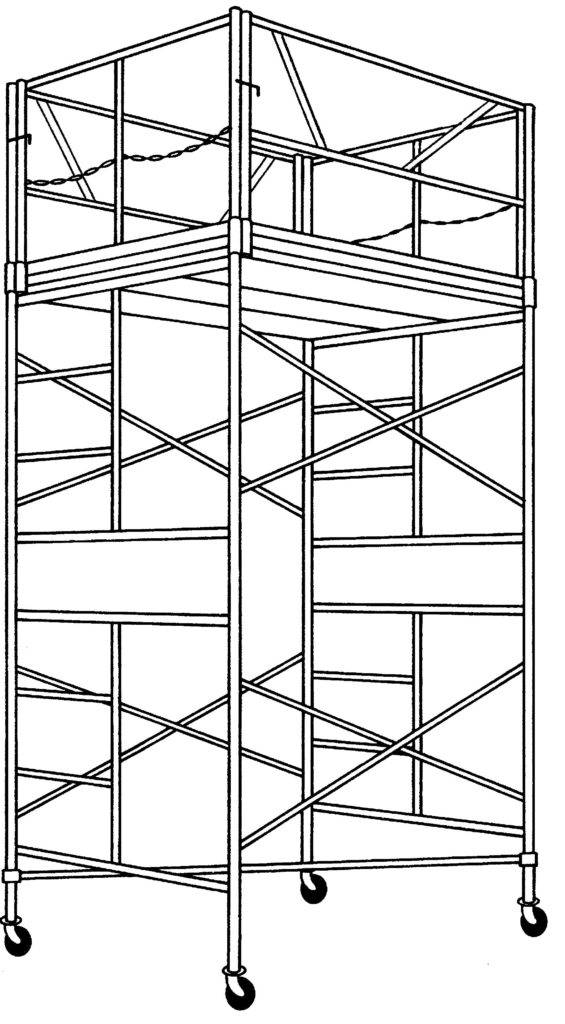
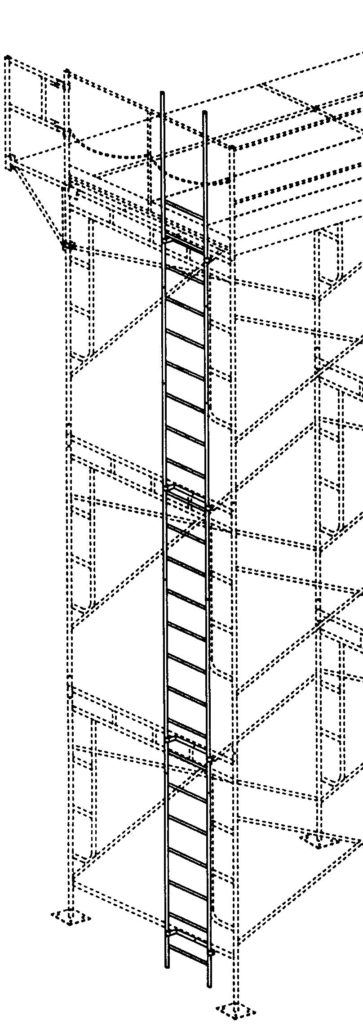
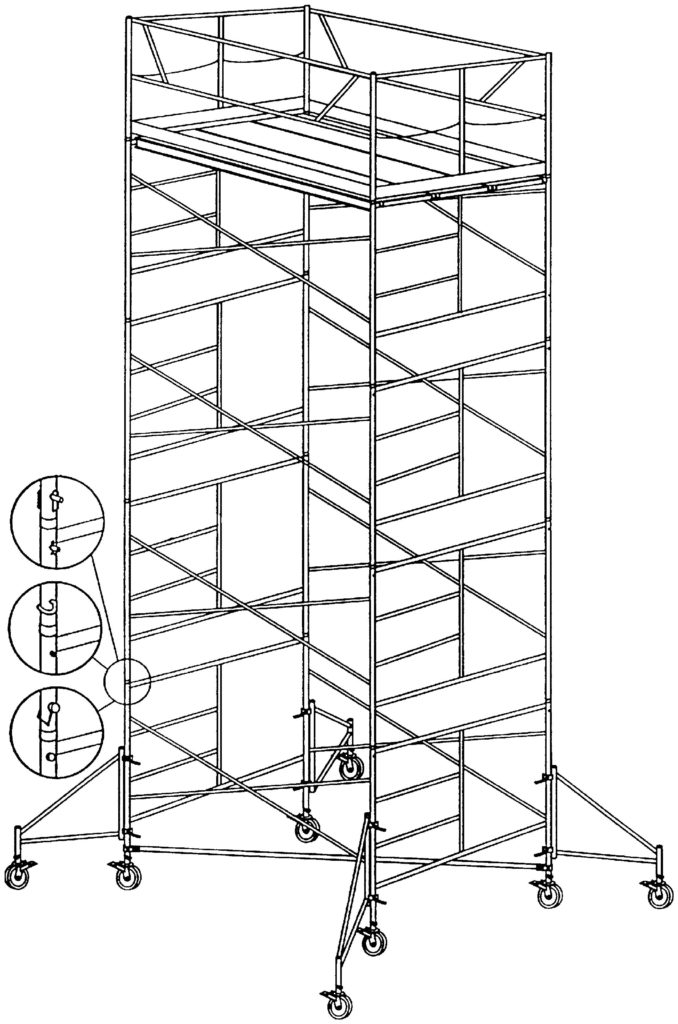

ALL PHOTOS AND DRAWINGS ARE FOR ILLUSTRATION ONLY. FOLLOW ALL APPLICABLE ANSI AND OSHA CODES AND REGULATIONS FOR USE OF THIS EQUIPMENT. DO NOT USE IN AREA WHERE USER CAN COME IN CONTACT WITH LIVE POWER.
